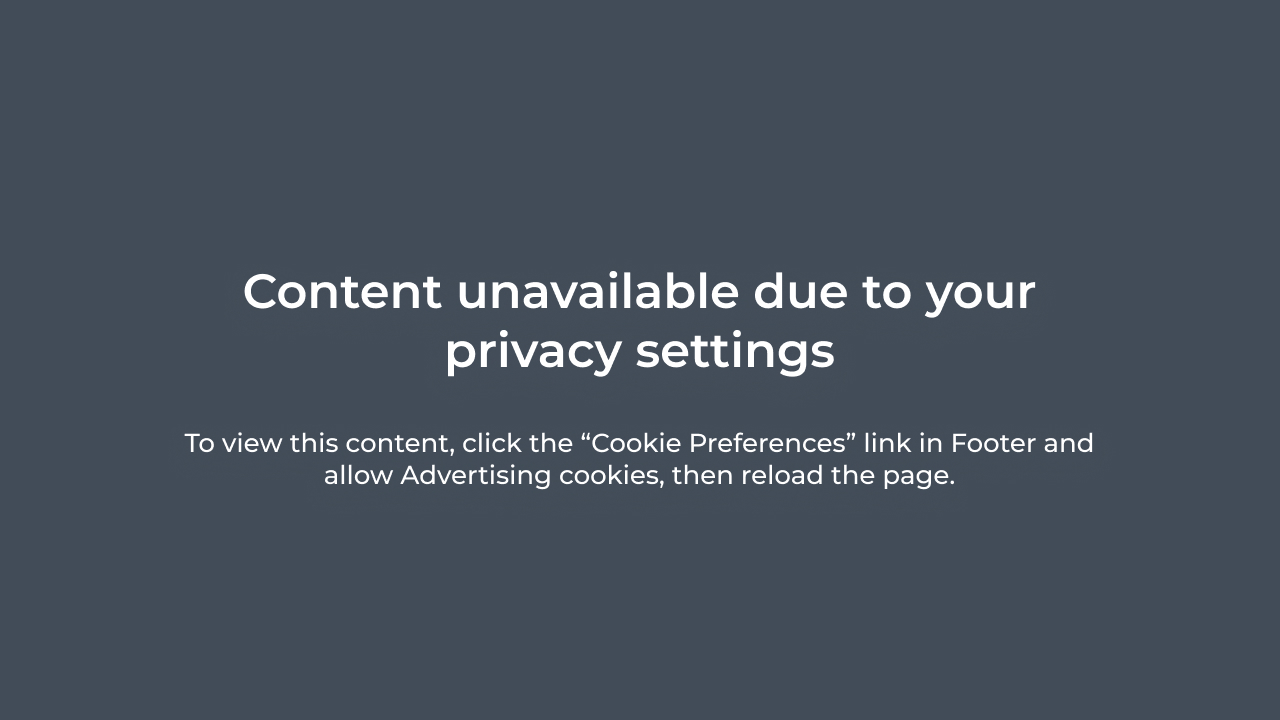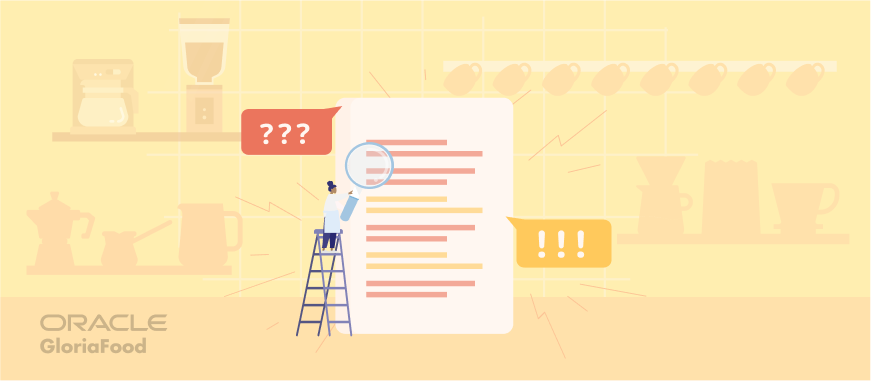- 1.Opening a restaurant is a get-rich-quick business option
- 2.A restaurant will be successful if you serve good food
- 3.Restaurant marketing is complicated and expensive
- 4.PDF menus are enough for your website
- 5.Hiring and training staff can be put on the back burner
- 6.Upselling and cross-selling comes across as pushy
- 7.You don’t need technology to succeed in the restaurant industry
You’ve probably heard it before: opening a restaurant will make you rich, or restaurant marketing is very expensive. There are many misconceptions about the restaurant industry, and if you want to succeed in it, you have to wade through what’s real and what’s not.
Below, we look at seven restaurant myths and debunk them one by one to help you avoid common pitfalls and build a successful business.
7 Common Restaurant Myths & Misconceptions
Myth #1: Opening a restaurant is a get-rich-quick business option
If one of your main reasons for opening a restaurant is that you want to get rich, you will be disappointed to learn that restaurants are not an easy way to make money.
60% of restaurants fail within their first year, and almost 80% close down in less than five years. This eye-opening statistic shows that the restaurant industry is extremely competitive and difficult to infiltrate.
The truth:
Now, that doesn’t mean you should let the statistics above scare you into giving up your dream of opening a restaurant. Is owning a restaurant profitable? It can be, but not instantly, and not without hard work and dedication.
It’s also important to manage your expectations of profitability. Let’s look at some figures that will give you an idea of what to expect in terms of making and spending money as a restaurant owner:
- How much do restaurants cost to open: This cost depends on a lot of factors, from location to whether you’re going to lease a space or buy it. Costs can range from $95,000 to $2 million. Keep in mind that beyond your restaurant startup costs, you will also have recurring expenses such as food costs and overhead costs.
- How much do restaurants make in a day: On average, restaurants make about $1,350 a day. Obviously, you are going to have lull days and days that are more profitable.
- How much do restaurants make in a month: The average monthly revenue for a restaurant is $40,500.
- How much do restaurants make in a year: On average, restaurants make around $486,000 each year.
Myth #2: A restaurant will be successful if you serve good food
While food is your number one selling point, it’s not enough to serve good food and hope people will come, or to convince customers to return.
If you want to be successful long term, you need to foster loyalty and constantly find new ways to attract customers, and that involves more than just cooking delicious food.
The truth:
You need a combination of good food, quality service, and a nice atmosphere to craft a dining experience that guests won’t soon forget.
You also need to spread the word about your restaurant, instead of just waiting for customers to stumble upon it. Yes, we’re talking about restaurant marketing, which brings us to another one of the most popular restaurant myths around.
Myth #3: Restaurant marketing is complicated and expensive
As a person who’s passionate about food or is business-savvy and wants to open a restaurant, the notion of marketing probably sounds complicated and like it should be the least of your concerns.
But without marketing, your restaurant won’t stand out from the competition. That doesn’t mean you have to spend a fortune on advertising or get lost in complicated tools that make no sense.
The truth:
There are easier and more affordable ways to promote your restaurant online and offline. From using social media to distributing promotional flyers in the neighborhood and creating a website that’s optimized for search engines.
And if these tasks already sound too complicated, you’ll be happy to know GloriaFood provides robust marketing features for restaurants using our free online ordering system:
- Restaurant website generator that can help you create an SEO and sales-optimized website in minutes. This will help you rank higher in Google for local searches and have more customers find your restaurant online.
- Kick-starter module where you can create promotional flyers with irresistible offers and invite your existing dine-in customers to place their first online order.
- Promotions module with many built-in templates that can help you create a variety of food offers and promotions. You can customize these templates to target new customers, return customers, or both.
- Autopilot module, an email marketing engine featuring three campaigns designed to encourage second orders, prevent cart abandonment, and re-engage clients who haven’t placed an order in a while.
Myth #4: PDF menus are enough for your website
PDF menus might have worked for restaurants in the past, but nowadays, informed and tech-savvy customers don’t have the patience to wait for a large restaurant PDF menu to load or to zoom in and out trying to read a small font.
And why would they when they can close your menu and find another restaurant in seconds, one that provides an easy way to browse the menu and place an order?
The truth:
To avoid losing customers to the competition, leave PDF menus in the past, where they belong. Instead, make sure your menu is responsive so customers can access it anytime, anywhere, and on any device.
And instead of simply displaying the dishes, enable hungry customers to also place orders online for pickup or delivery. This will unlock a new revenue stream and ensure you don’t rely only on dine-in profits.
Myth #5: Hiring and training staff can be put on the back burner
One of the most common restaurant myths is that you don’t need to put that much time and energy into hiring your staff because there will always be people who want to work in the hospitality industry.
While part of that may be true, as a startup restaurant, you can’t afford to keep hiring the wrong people and having to change teams often. Remember: hiring restaurant staff is more expensive than retaining them.
The truth:
One of your main concerns when opening a restaurant should be to hire the perfect team that works well together and understands your vision for the restaurant.
To ensure your staff works like a well-oiled machine, invest time and resources into creating a detailed training manual that you can come back to again and again when training restaurant staff.
To keep employees happy and ensure they’re in it for the long haul, provide benefits like career development opportunities, team buildings, sales incentives, free food and discounts, and so on.
Myth #6: Upselling and cross-selling comes across as pushy
This is only partly true, in that there is a wrong way to upsell and cross-sell that can come across as obnoxious. For that reason, many restaurants fear this practice and don’t engage in it, worried they will drive customers away.
The truth:
Most customers actually welcome restaurant upselling and cross-selling because it helps them decide, provides recommendations that they might not have considered, and ultimately enhances the dining experience.
However, teach your servers how to properly upsell without sounding too salesy. The key is to help the customer as much as it is to increase the check value.
If the client says no, don’t insist or you’ll risk upsetting them. But if they seem open to it or they are loudly pondering what to eat, you can make suggestions that will help you boost profits.
Myth #7: You don’t need technology to succeed in the restaurant industry
While this may have been true a decade ago, it no longer applies today. The modern consumer is used to convenience in every aspect of their life, including dining, and restaurant technology plays a big role in that.
The truth:
Technology helps both you as a restaurant owner and the customer. You can use it to serve more people faster, streamline the ordering process, and improve the customer experience.
Here are a couple of tools and services that customers expect from a restaurant:
- Table reservation system: The ability to book a table online without having to call the restaurant is highly appreciated by customers.
- Direct online ordering: Did you know that 63% of customers prefer to order directly from the restaurant instead of a third-party app? Give your clients the option to place orders on your website.
- Ordering in advance: Whether that is pre-ordering food when they book a table or scheduling a takeaway order for a later time, this flexibility will bring customers back to your restaurant.
- QR code ordering: The option to scan a code to open the menu, order, and pay without having to wait for a server is an increasingly popular feature in restaurants.

That’s a Wrap
Restaurant myths and misconceptions can scare off people who are thinking of opening a restaurant or give them false expectations. Now that you know the truth behind the claims, you can make informed decisions regarding opening, operating, and promoting your restaurant.
